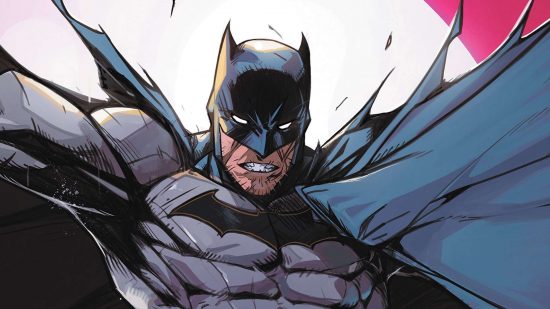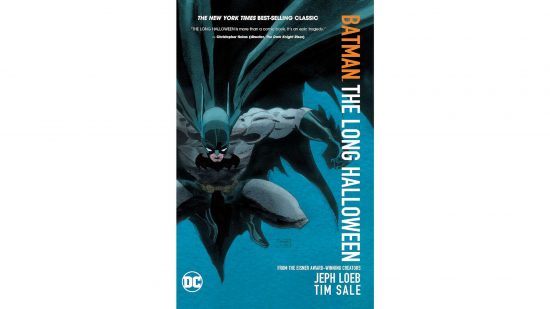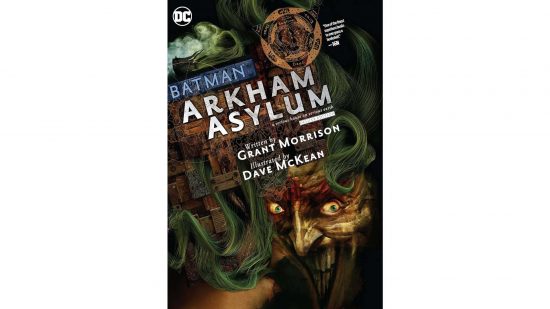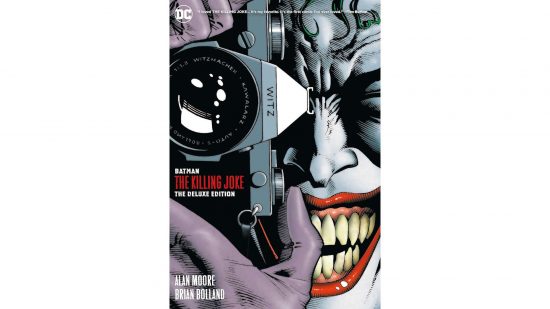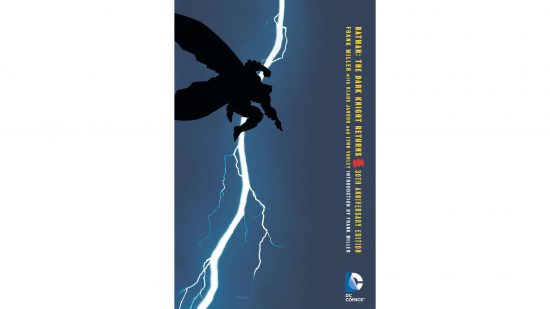Batman has appeared in thousands upon thousands of comics, from his earliest appearance in the pages of Detective Comics in 1939, through long-running arcs in his main continuity, with spin-off graphic novels, alternate universes, and reboots aplenty. There’s more Batman out there than you can shake a batarang at – so we’ve picked the best Batman comics that all comics fans should read.
There’s something about Batman that brings the best out of comics writers and artists. You’ll find two entries on this list on our guide to the best DC comics, and one of those makes it onto our list of the best graphic novels full stop. Not every Batman comic is a hit (looking at you, All Star Batman & Robin), but when they’re good, they’re really good.
These are the best Batman comics for all comic book fans:
- Batman: Year One – the bleak beginning
- Batman: The Long Halloween – super-hero vs serial killer
- Batman: Arkham Asylum – the brink of madness
- The Killing Joke – a spinoff so good it became canon
- The Dark Knight Returns – the best Batman comic
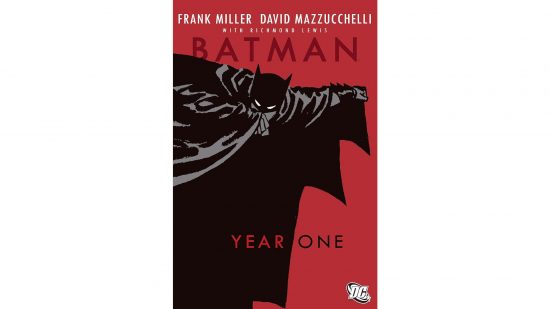
Batman: Year One
The bleak beginning
With a crime-fighting career that starts in the 1930s, Batman has been rebooted more often than an office computer. While you don’t need to follow any kind of continuity to enjoy Batman, Batman: Year One is a great starting point, introducing a youthful version of the caped crusader during his first year of vigilante crime-fighting.
This is a remarkably grounded take on Batman, as the young hero investigates an ongoing crime war between mafia houses in Gotham City. Author Frank Miller’s love of noir cinema and fiction shows through, while David Mazzuchelli’s crisp artwork renders Gotham’s seedy nightlife and the opulent homes of crime lords with crystal clarity.
Batman: The Long Halloween
Super-hero vs serial killer
Batman: The Long Halloween is a great next step after Year One, following Batman and Lieutenant Gordon as they try and crack a series of serial murders committed by the enigmatic “Holiday”. It forms a great bridge from the grounded crime fiction of Year One to the superheroic antics that make up much of the Batman canon.
Tim Sale’s artwork serves to emphasise this. Like Mazzuchelli, Sale uses clean lines and extreme black contrast that renders Gotham dark without being impenetrable. But his character designs are exaggerated and gothic, reflecting the growing weirdness of the villains Batman has to fight.
Batman: Arkham Asylum
The brink of madness
While Grant Morrison’s plot for Batman: Arkham Asylum is solid enough – a journey into the heart of darkness as Batman ventures into an Arkham Asylum overtaken by the patients – the real draw is Dave McKean’s artwork. It’s so good that we have no qualms recommending the book on the art alone.
If you’ve read the Sandman novels, you’ll likely have seen McKean’s dreamlike, mixed-media art on the covers, as it’s used in most printings of the collected volumes. Arkham Asylum lets him loose with Batman’s rogues gallery, bringing the series to the brink of pure horror. Batman is a looming shape rising from the dark: the Joker is a frantic slash of white grease paint and red lipstick. Top notch.
The Killing Joke
A spinoff so good it became canon
The Killing Joke was originally conceived of as a standalone graphic novel, written by comics legend Alan Moore and illustrated by Brian Bollard. To anyone who’s watched the animated adaptation, we can promise you that the comic book is much, much better.
The Killing Joke follows two narratives, one an origin story for the Joker, the other set in the present day as the Joker tries to terrorise Commissioner Gordon into a mental breakdown. The Joker is convinced that ‘one bad day’ is enough to make anyone snap and become just as psychopathic as he is, and he’s determined to prove it. His efforts to break Gordon even include shooting and paralyzing his daughter Barbara.
While Wargamer has no problem with violence in comics per se – we’re writing about Batman, after all – we’ll advise that this plot beat feels exploitative. Although Killing Joke is technically not part of mainstream Batman continuity, Barbara’s paralysis had such an impact on readers that it quickly became part of the main narrative.
Bollard’s art features detail-packed backgrounds and characters overwhelmed by extremes of emotion. We recommend you get the Absolute edition of this book, as it features two different coloring treatments, the original by John Higgins using a limited palette of extremely bold colors, and a new, more muted treatment by Bollard. We think the original suits the story better, but with the Absolute edition you get the choice of both.
The Dark Knight Returns
The best Batman comic
The Dark Knight Returns is as close to an ‘end’ to Batman as we’re ever going to get, and it’s nigh perfect. It’s also Frank Miller’s best work on the franchise (we’ve done our best to forget All Star Batman & Robin), who both wrote and pencilled the four-part miniseries, with Klaus Janson adding inks.
The aged Bruce Wayne has long since given up the mantle of Batman, shaken by the death of Jason Todd (the first Robin), and Gotham City is once again a crime-slicked hellhole. Batman’s return is necessary, but – in true noir fashion – it won’t go unpunished by the powers that be.
Miller’s libertarian, anti-government attitude shines through in this story. Later in his career Miller’s politics led to some frankly weird stories, but here it empowers a deeply cynical vision of the DC Universe, in which Superman is a lackey to Ronal Reagan and a pawn in the US / USSR cold-war.
Did we mention that this comic was where the idea for a fight between Batman and Superman came from? It’s a testament to how good the book is that here, it absolutely rules. Martha is not mentioned once.
Still eager for more comics? Check out our guides to the best horror comics, best Marvel comics, best Image Comics and the best Dark Horse comics
